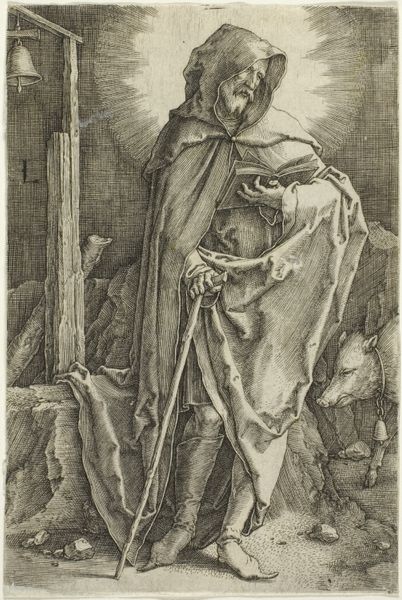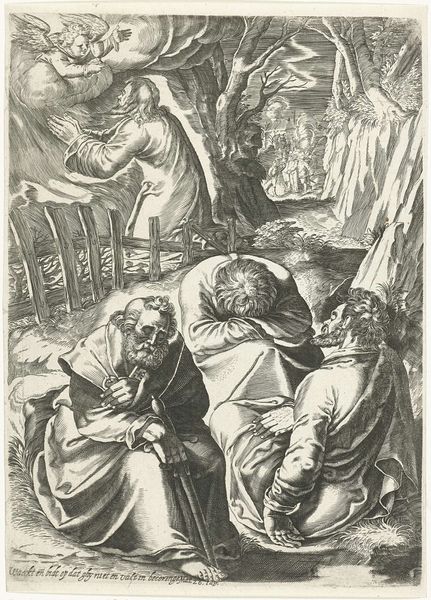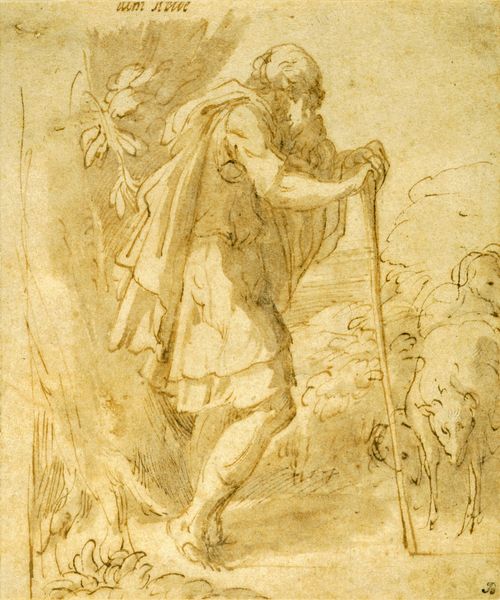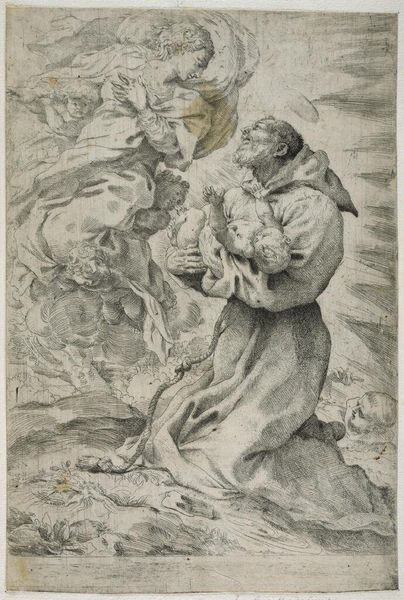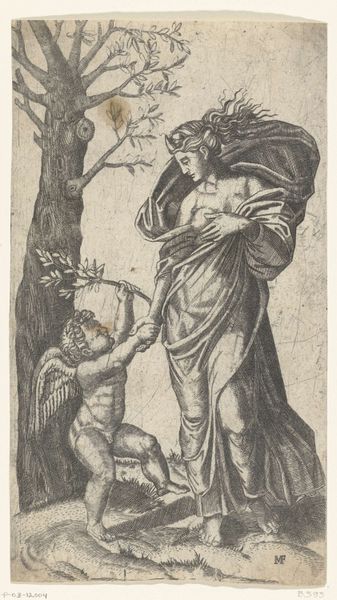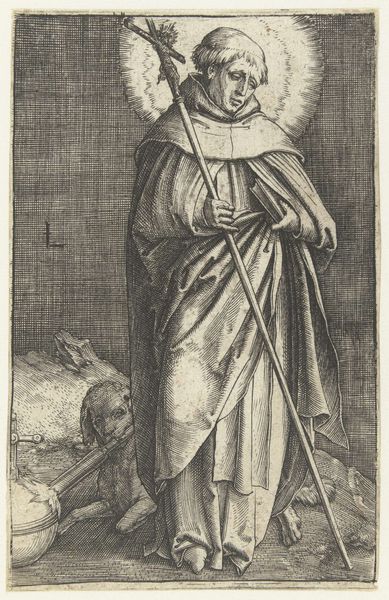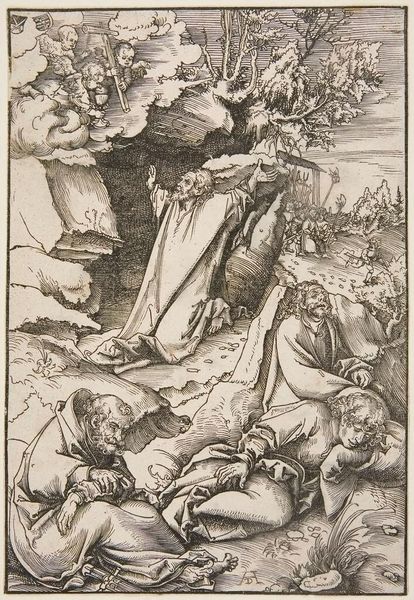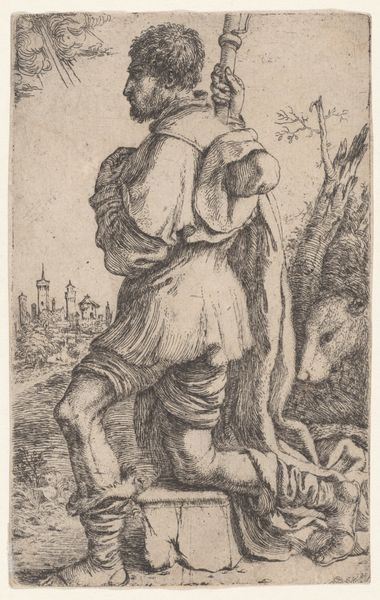
drawing, charcoal
#
portrait
#
drawing
#
landscape
#
charcoal drawing
#
oil painting
#
christianity
#
charcoal
#
northern-renaissance
#
charcoal
#
christ
Dimensions: 368 x 296 cm
Copyright: Public domain
Curator: Looking at "St. John in the Forest," a charcoal drawing made around 1515 by Matthias Grünewald, currently housed at the Albertina in Vienna, what’s your first impression? Editor: Somber. There's an overwhelming sense of pensive solitude emanating from this figure and the barren landscape that envelopes him. Curator: Yes, the drawing itself uses charcoal to achieve striking contrasts in light and shadow. It invites us to consider the material conditions of artistic production at the time; charcoal was relatively accessible, facilitating detailed sketching and preparatory work, it offered a practical avenue to express his vision.. Editor: For me, the heavy use of shadow speaks to the symbolic darkness associated with St. John's prophetic warnings and the isolation he often faced. His gaze is cast downward, emphasizing introspection. It visually echoes his role as a solitary voice crying out in the wilderness. Curator: Consider the choice of charcoal not just for tonal effect but also its ready availability and relative affordability, its effect on a culture increasingly valuing visual art? Were the tools making the image more accessible? Editor: Intriguing point, but it's the carefully constructed symbolic weight that fascinates me here. Look at the staff in St. John’s hand, a direct reference to pilgrimage and purpose but could be associated with figures of wisdom from classical antiquity to shepherd kings of old. Its presence enhances the narrative depth. Curator: The making is key; think of charcoal, readily available, directly linked to the landscape from which it is sourced and transformed via the labour and skills to represent labor and faith, a complex cultural construction. Editor: I appreciate that reading, but can't overlook the symbolism - it also resonates deeply with established iconographic traditions in religious art. Curator: The piece compels me to contemplate Grünewald's production process within a shifting landscape of material consumption. What natural resources were required? Editor: And for me it prompts reflection on enduring themes of faith, isolation, and the visual language we've developed to express them. A solitary, potent image. Curator: A dialogue etched in charcoal. Editor: A timeless message written in symbols.
Comments
No comments
Be the first to comment and join the conversation on the ultimate creative platform.



